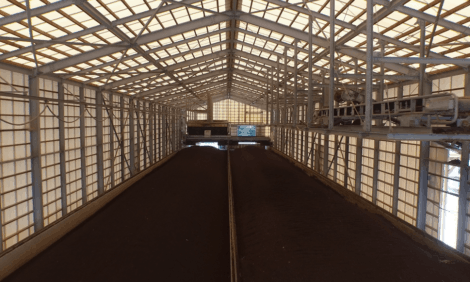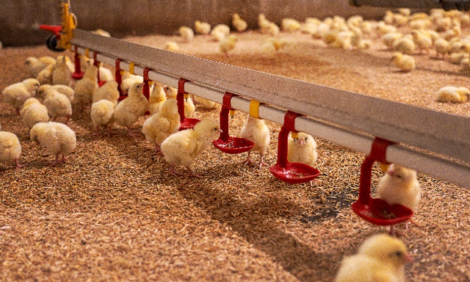



2023 IPPE: Which infectious bronchitis serotypes should be included in your vaccination program?
Know what bronchitis serotypes are in your barnsDr. Fernando Ruiz-Jimenez, a technical services veterinarian with Zoetis Poultry, spoke to The Poultry Site’s Sarah Mikesell at the 2023 IPPE in Atlanta, Georgia, USA, about infectious bronchitis in layers.
How does infectious bronchitis present itself in layers?
When I think about infectious bronchitis infections, I think about what I call the 3 Rs. They have different presentations:
- Respiratory
- Renal (kidneys)
- Reproductive system
When we talk about layers, we usually have the respiratory presentation, where you see upper respiratory signs, like conjunctivitis, tracheitis and mucus in the nostrils and sinuses. The reproductive presentation can present as something called false layer syndrome if the birds are infected early in life, whereas if the infection happens during lay you typically see drops in egg production as well as external and internal egg quality issues such as wrinkled eggs, thin-shelled eggs, watery albumen, etc. These are some of the usual presentations we tend to see in the layers.
How do you determine which IBV serotypes to include in a vaccine program?
That's a question we get a lot, and there isn’t a good general answer for everyone. But in the US, a general IBV vaccination program is usually based on the serotypes Massachusetts (Mass) and Connecticut (Conn). About 20 years ago, the Arkansas (Ark) serotype was included in the vaccination programs bringing much value to the industry
Vaccines were falling short, but when Ark serotypes were added, the industry saw huge improvements in the performance of the birds and the protection for the disease. Now, with new variants coming on like Georgia 08 (GA08) and Delmarva 1639 (DMV/1639), people are looking for new strains to include in their vaccination programs to make them more effective against this ever-changing disease.
What’s the best way to monitor IBV in the field?
If you want to make changes in your vaccination program that will have a real impact, producers need to be monitoring their flocks, so they can know what bronchitis serotypes are circulating in their barns.
If you don’t have a lot of issues, then a passive surveillance program might work. Start by taking samples in the pullet and layer facilities and run PCR tests to get a better idea of what bronchitis serotypes are in the field.
Sometimes during surveillance testing, a new variant is identified, and producers want to immediately change their vaccination program. However, if they are not experiencing any production drops or egg quality issues, they may not need to do it. The virus may be out there, but if you aren’t having any issues that means that the vaccination program is working, so leave it that way. However, if your flocks are having issues during production, then that is a different story, and it may be a good opportunity to be active in changing your program to fit the serotypes on your farm.
Have you done any recent trials looking at protection against IBV variants using different vaccines?
I briefly mentioned false layer syndrome (FLS) earlier. This happens when there is an IBV infection early in the chicken’s life, typically during the first two weeks. In the US, DMV/1639 has been identified as one of the main IBV strains causing FLS, but any other IBV serotype has the potential to cause it as well. When an unprotected flock experiences an early exposure to IBV, the virus is able to infect the reproductive tract, affecting the epithelial cells and causing atrophy. This will cause the oviduct to fill with fluid, so the hen will not be able to lay eggs. The problem is that you cannot tell if the hen is healthy or not - she will look perfectly normal, but she will not lay any eggs.
Since it is hard to diagnose, the typical prevention program is to do a spray vaccination with a Mass serotype in the hatchery. This has helped a lot, and the majority of the US companies are doing this with excellent results.
We were wondering what would happen if two IBV serotypes were included on the day of hatch spray vaccination instead of one. We ran a trial with a Mass-Ark vaccine and checked for protection of internal organs and tracheal pathology, and we saw really good results. The Mass-Ark combination showed better protection than Mass alone on both the reproductive and the respiratory tissues.1
The Mass-Ark combination opens the door for possibly improving the early IBV protection of the birds. Also, this program can help improve the response to the booster vaccinations since a broader baseline is created with two serotypes instead of one. So that may have more implications in the long-term protection against bronchitis.
What should the producer focus on to achieve a successful vaccination for IBV?
You can have the best vaccine in the world, but if you don't apply it correctly, then it won't work. The success of any vaccination program needs to focus on how the vaccine is applied. Start by looking at the whole vaccination process.
When the vaccine comes onto the farm, is it arriving in the proper storage conditions, where is it stored, is it stored right away, are you recording the temperatures of your refrigeration systems? These are all important things to consider along with all of the proper handling and application techniques on the day of vaccination.
Mistakes in any of these areas could affect the reliability and effectiveness of the vaccine, but these mistakes can easily be corrected. Just go over the whole application process, and you can usually find something that can be improved. Then, of course, not only bronchitis vaccination but any vaccination will perform better.
We do a lot of vaccine evaluations, and the simple details are usually the bigger and most common problems. A simple fix is training your crew and focusing on those small details. Sometimes the crew members just don’t understand why they are doing certain procedures or the importance of it.
When training, I tend to tell them, “You're laying the foundation for the health and production of this 100,000-bird flock. This is important, and in the end, your work will help bring food to the table of many people, so it's critical to stay on top of your role in the vaccination process.”
Learn more about IBV treatment options from Zoetis.
1 Data on file, Study No. KC-7331, Zoetis Inc.
All trademarks are the property of Zoetis Services LLC or a related company or licensor unless otherwise noted.
©2024 Zoetis Services LLC. All rights reserved. BIO-00418










